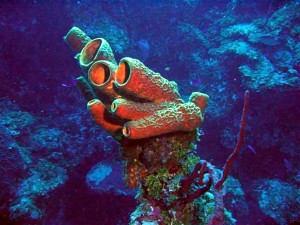MONDAY, 23 AUGUST 2010
Fossils have been found in a rock formation in Southern Australia that are believed to be the calcified remains of millimetre- to centimetre-sized sponge-like marine creatures. Because the fossils were found below strata from the Marinoan glaciation, the sponges must have lived at least 635 million years ago, according to a report published in Nature Geoscience [1].The fossils pre-date the oldest known calcified fossils of this size by 90 million years, and are shaped like anvils, horseshoes, wishbones and perforated slabs. When constructed into three-dimensional models, they appear as ellipsoidal organisms with an asymmetric body plan. The sponge-grade metazoans likely lived as filter feeders in reefs at the bottom of shallow waters. Some specimens show evidence of stalks or holdfasts, and because they have a complex network of interior canals, these may not be the simplest or oldest sponges to have existed.
As well as changing our perception of when the first animals appeared, this discovery firmly places early animal life in the second of two massive glaciations that punctuated the Neoproterozoic Era. Since animal life probably didn't evolve twice, it appears that these sponges endured and survived the severe climatic event known as "Snowball Earth." During this episode the planet is believed to have been almost entirely covered in ice or slush, creating an extremely inhospitable environment. 100 million years later, in the Cambrian explosion, conditions allowed for a rapid diversification of life and the appearance of most major groups of complex animals.
Written by Robert Jones

